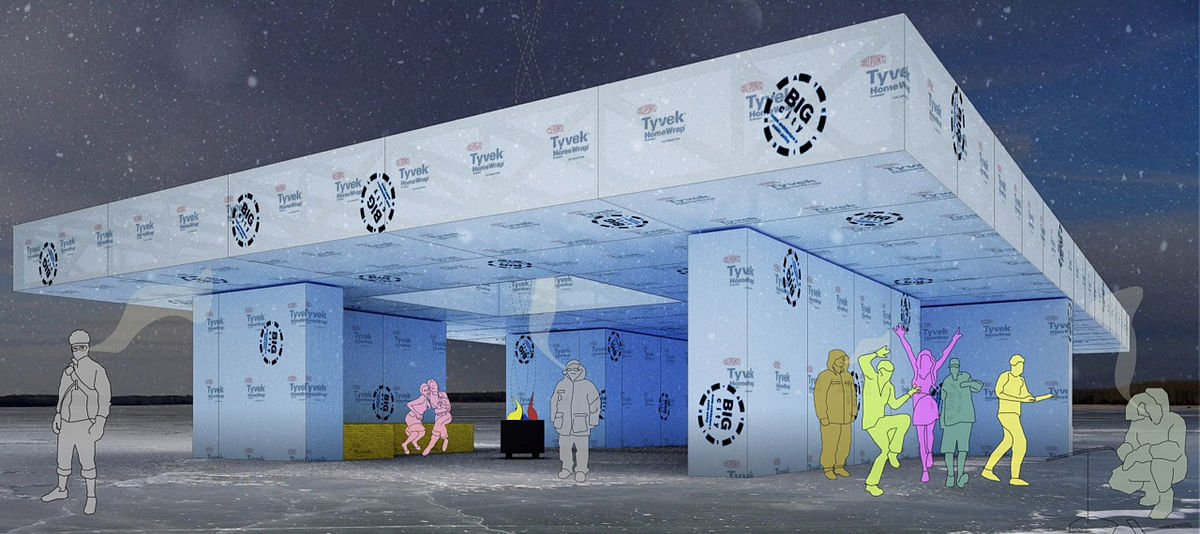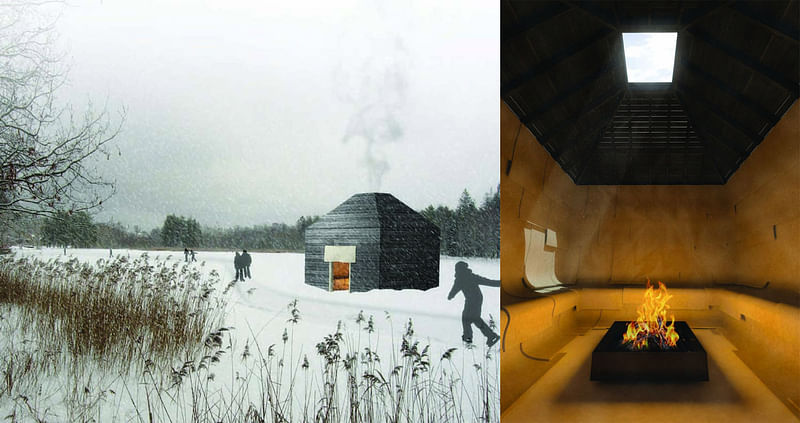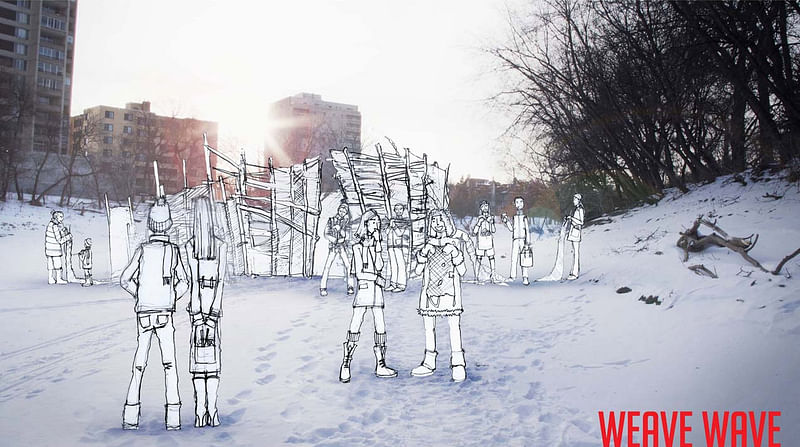Warming Huts v.2013 - Five Winners Selected
By Bustler Editors|
Tuesday, Dec 4, 2012

Related
Warming Huts: An Art + Architecture Competition on Ice has unveiled the five winning projects of its 2013 edition. Like in previous winters, the selected huts will be built in early January on site and placed on the Assiniboine Credit Union River Trail in Winnipeg, Canada - the longest naturally frozen skating trail in the world. Three of the huts were chosen from the open submission process, one from a separate University of Manitoba competition, and one is being designed by award-winning Montreal firm Atelier Big City.
Following are the five selected Warming Huts for 2013.
Big City by Big City Atelier
Montreal, QC
Keeping warm together, that is what Big City is all about. The great open air gathering space is inviting and receptive, welcoming skaters in for a moment of rest. The simple yet grand structure out on this natural rink is a hovering silhouette, somewhat blurred into the colours of the ice and snowy winter setting.
Finished in Tyvec, a material inevitably linked with things to come, the scale of the warming hut is larger than life to imitate the wide open space surrounding it. A true Beau Geste of a building: part mirage, part air, a skeleton of everyday construction aspiring to create a place.
Big City’s construction is can be compared to a giant thick blanket, with the layers filled with air, forming an insulating layer, giving form to the hut, absorbing the sun's warmth, hopefully creating a brief pause in the cold winter skate.

Hygge House by Plain Projects, Urbanink and Pike Projects
Winnipeg, MB
Hygge House is cozy. It is a simple wood framed structure; a reproduction of one of the most cherished symbols of Canadiana – the wilderness cottage. Within Hygge House, artifacts of cottage life set a stage for an authentic depiction of the comfort and familiarity of the weekend getaway. The entire interior of Hygge House is painted fluorescent yellow. Coating the contents not only creates a warm, inviting space, sheltered from the wind – it also creates a stage set where the visitors to Hygge House become essential components of the experience. Although the house is full of mounted antlers and fish, warm blankets, a working wood stove, old baseball hats, comic books, plaid shirts and old tine matches, Hygge House is only truly achieved when people come together. Hygge House becomes a place for warmth and togetherness.

Smokehouse by aamodt/plumb architects
Cambridge, MA
The elemental, pure form of the hut, almost the very symbol of home, rendered in the stark black of charred wood, is nestled in soft white snow. Inside, layers of thick ivory felt line the walls and seating, creating a nest-like interior reminiscent of ancient gathering places strewn with animal pelts. On closer inspection, one discovers the felt layers embossed with delicate patterns and textures, a subtle sanctification of intimate space. The room has a unique sound, or absence thereof: it is silent, like the sound of new snow on the street.
One enters and leaves through the same door, stooping to duck under the felt draftstop, bending to join temporary community within. The communal nature of the experience is revealed only upon entering as you join the visitors gathered in the quiet warm space. It is this unfolding of subtle surprises that lie behind the formal quietude of the hut.

Woolhaus by Myung Kweon Park
New York, NY
Woolhaus emphasizes the experience of sensory contrast through its expression of a single material: felt. Upon entering the hut, visitors are engulfed in a world of extreme insulation. The suspended dark grey sleeves of felt absorb heat, light and sound; creating an interior environment that is isolated from the intense cold, brightness and noise of the frozen Assiniboine River. Woolhaus was conceived more as a piece of clothing than a building - something which you enter into and maintain constant contact with, like a warm sweater. In contrast to conventional buildings, where occupants pass through a material threshold and enter a space, the material of threshold is both material and space. Interior spaces are not designed; rather, the occupant is free to define their own spaces through interacting with the woolen tubes. The opaque nature of the hut encourages exploration and inevitably, surprise. Curious visitors must enter the hut to know what the interior experience holds, and the further they go, the more insulated they are from the outside conditions.

Weave Wave by The University of Manitoba Architecture Students
Winnipeg, MB
100 students x 100 hours = Weave Wave
The historical relationship between the Red and Assiniboine Rivers evoked the Warming Hut proposal Weave Wave. Our desire for a connection to the powerful and iconic natural landscape of the rivers undeniably continues to impact our collective identity.
100 students x 1 meter per person = 100 meters
Weave Wave is a longing for this interlacing city, landscape (nature) and community. Weave Wave will be constructed by the social craft of knitting and weaving: 100 materials (natural and manufactured) will be woven together to create a dynamic multi-textured hut, stretching 100 meters along the river.
100 students x 1 texture per person = 100 textures
Visitors to the Weave Wave will experience a unique form of Warming Hut: a curated topography of 100 connected pieces which can be manipulated to form shelter, or be wrapped around the body for warmth. The community is invited to physically add to the story of our identity with the Rivers, through the communal and social act of knitting.
All images via Warming Huts.

Share
0 Comments
Comment as :